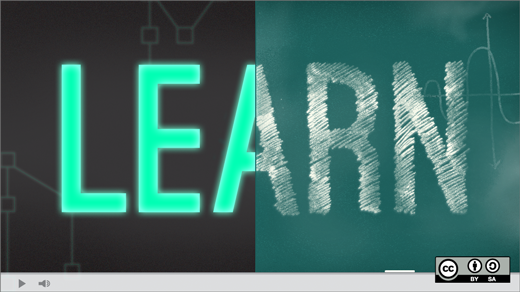Open source is not just about making something publicly accessible. It is a set of values—a way of working that practices open collaboration between a community to build or maintain something. On the basis of these values, today we can observe a vibrant and thriving open source community responsible for many of the great successes in many industries.
Most parents want their children to uphold good values through their childhood into adulthood, and exposure to open source is just one of the ways of ensuring children learn these good values. Valuing open collaboration is not something limited to the technological industry; we can see it at work across other industries and communities. By exposing the current generation of students to the open source way, we are bound to see a positive impact in the future, when these students go into the workplace with an open mindset.
This open mindset in turn leads to faster development as people contribute to open source projects because they have a driving passion for whatever they're working on. This teaches children to work with what they enjoy, not what provides the most money. More and more companies are now looking for people who have worked on open source projects, and showing students what open source can do will encourage them to contribute to projects (or even open source their own projects), which will most certainly pay dividends in the future.
In an open source environment, relationships between volunteers are crucial for ensuring the project thrives. Open source encourages people to grow and maintain healthy relationships that would greatly benefit these students, not only in open source communities but also in other environments.
Exposing students to open source
Open source technologies are responsible for helping many students across the globe, whether it's providing them with a platform for experimentation (like the Raspberry Pi) or providing less fortunate children in less economically developed countries with laptops powered by GNU/Linux. The low cost of the Raspberry Pi has made it an affordable option for schools and students alike to utilize for enhancing learning. Raspbian, the recommended distribution for the Raspberry Pi, comes with Python and Scratch preinstalled so students can learn how to program using the Raspberry Pi.
But this is only the tip of the iceberg. With the Raspberry Pi, students can work with sensors and other external equipment in order to do more creative things such as make a controllable robot. More ambitious students can take this one step further and purchase their own Raspberry Pi computers for use outside of the classroom, perhaps as web servers for their development projects (HTML, CSS, JS, PHP among many others), as media servers, or for other projects.
The Raspberry Pi's possibilities are truly endless. Recently the BBC launched a national project to provide every student in year seven (11- and 12-year-olds) with a personal coding device currently named project Micro Bit, which utilizes open source hardware. These are only a few of the examples in which open source technologies are helping students.
Many students currently use (or will use) open source technologies (or technologies that use open source components) every day, but many of them don’t realize this. That open source technologies are helping students on a daily basis, enhancing their education, taking their curricula to places they've explored, or providing them with resources that wouldn't otherwise have been accessible to them, is clear. And derived from open source philosophies of open source is a new form of education today: open education, where educators across the globe come together to share, produce, and update educational resources for free.
Increasing awareness
One of the easiest ways to increase students' awareness of open source is by exposing them to the fact that many of the technologies they use every day are open source.
I personally found out about the open source movement by researching the origins of GNU/Linux, which powers my Raspberry Pi Model B. Until that day, I was completely unaware about both the open source movement and the fact that I was using an open source operating system.
One of the many other ways we can expose students to open source is by teaching them about open source values in their information technology classes or computer science classes. We often see students studying the backgrounds of many other subjects, and this certainly shouldn't be an exception. If students are required to learn about certain laws and their exact dates of publication, then why shouldn’t they have to learn about open source software and its principles, which are responsible for powering billions of devices, services, and infrastructures?







3 Comments